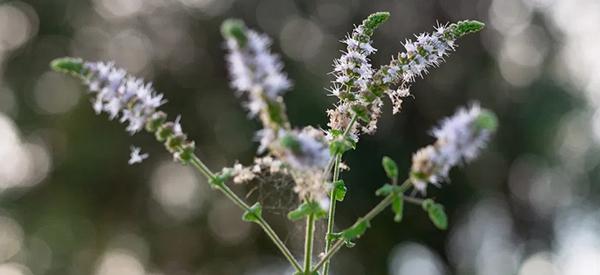
Black Cohosh
Black cohosh (Actaea racemosa) is an herbaceous flowering plant of the buttercup family. It often thrives in the woodland in North America and is a popular herbal medicine for many centuries. It is widely used in treating menstrual and menopausal problems. But more than its potent medicinal value, the black cohosh also makes a fine addition to ornamental gardens. It bears fluffy white flowers that look best in a cottage garden or woodland setting.
The plant exudes a sweet but fetid smell, but it is still used in flower arrangements because of its ornamental essence. Black cohosh also has a wildlife value with its ability to attract butterflies like the Appalachian Azure, Spring Azure, and Holly Blue. Instead of feasting on its leaves, these caterpillars prefer to devour the flowers instead.
The Actaea racemosa was formerly known as the Cimicifuga racemosa and was first used by the Native Americans. It was traditionally used for treating malaise, kidney disorders, gynecological problems, and inflammations. The North American colonists treat bronchitis, yellow fever, snakebite nervous problems, and uterine disorders with black cohosh. When the plant reached Europe in the 17th century, locals used it as an aid for pregnancy and labor pain.
Where Black Cohosh Is Found
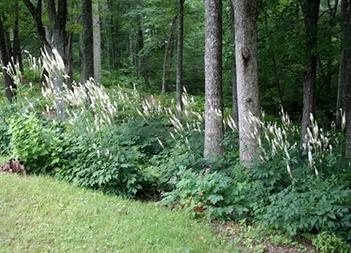 Black cohosh originated from eastern North America.
Black cohosh originated from eastern North America.
It is abundant in the woodlands of Maine, Georgia, Missouri, and Arkansas. This terrestrial plant thrives in places with moisture-retentive soil and dappled shade.
The Eastern United States is still the largest producer of black cohosh, which supports the demand for herbal medicine in treating menopausal problems.
Related: The Complete Map of Edible Plants: Find Out What You Have in Your Area! (Video)
How To Identify Black Cohosh
Black cohosh grows lovely and fluffy white flowers that give it the moniker Fairy Candles. It is also called black bugbane, black snakeroot, macrotys, and rheumatism weed. In midsummer, during its blooming season, the black cohosh gives a visually striking appearance notwithstanding its unpleasant smell.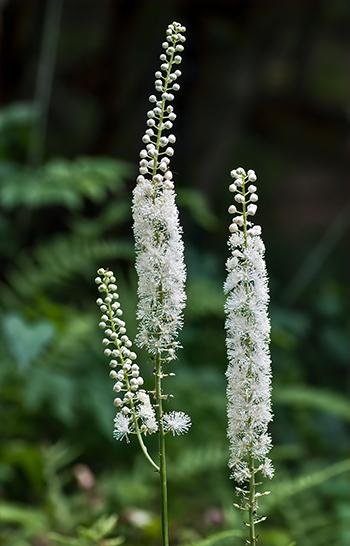
- Leaves. Black cohosh has deciduous leaves that grow alternately along the stem. Its leaves are compound with a showy presentation. The basal leaves are wedge-shaped that taper to the base as it converges. The terminal leaflets are three-lobed. Its upper leaflets are ovate, two to five-lobed, and with irregularly serrated margins.
- Flowers. The creamy and fuzzy flowers of the black cohosh grow in one to two-foot raceme or wand-like stalks. They have no petals but are a collection of clusters of stamens that surrounds a white stigma.
- Fruits and Seeds. The tiny seeds of the black cohosh develop in capsules about 5 to 10 mm long. The fruit is follicle type that has one ovary and splits along the side to release the seeds. Black cohosh seeds are brown or black, smooth, and triangular.
- Roots. Black cohosh has thick and knobby black or brown rhizomes. It produces large buds on the surface. It has fibrous roots that grow densely at the bottom part of the rhizome.
- Stem. The flower stem of black cohosh is smooth. It can be green or purple to lavender in color. It has at least one full leaf growing above the base of the flowering stem. Black cohosh can grow from 75 to 250 cm high.
Related: Plant Identification Guide – 400 Wild Plants That You Can Forage For (Video)
Actaea racemosa is a member of the Ranunculaceae or buttercup family. The name cohosh comes from the Algonquin word which means the appearance of rhizomes. There are around 20 recognized species of the Actaea genus, formerly known as the Cimicifuga genus. It is a close relative to baneberry.
The A. racemosa has two popular varieties: dissecta with deep-cut leaflets, and cordifolia with maple-like leaflets. Other varieties known cultivars of the black cohosh are:
- Racemosa atropurpurea or the purple-leaf cultivar
- Racemosa brunette with the darker foliage
The black cohosh should not be confused with the blue cohosh. The latter has a nicotine-like property and is without any research evidence to prove its safety.
How To Grow Black Cohosh
Black cohosh is a naturally appearing plant in its native home, but rare in non-conducive locations. It will proliferate best through its underground rhizomes. If you don’t have an existing plant, there are some varieties of A. racemosa in online herb and seed stores.
The plant is hardy in temperate climates and will grow in USDA 4 to 9. The plant has large roots and may not be ideal for container planting. Outside in the garden, they need to be planted 20-inches apart to allow the roots to grow. Black cohosh will do best in a garden that receives dappled sunlight, preferably under canopies.
Growing Black Cohosh from Seeds
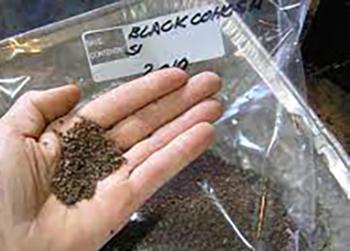 Black cohosh is quite tedious to grow from seeds. It has a slow and low germination rate compared to its rhizomes and cuttings. But if you don’t have a parent plant, using seeds is a viable way of starting black cohosh.
Black cohosh is quite tedious to grow from seeds. It has a slow and low germination rate compared to its rhizomes and cuttings. But if you don’t have a parent plant, using seeds is a viable way of starting black cohosh.
The seeds need stratification or exposure to warm temperatures and then cold to germinate successfully. Expose the seeds to 70⁰F temperature for two weeks and transfer them to the fridge at 40⁰F for three months.
Plant the seeds directly in the garden if possible, or indoors about ¼-inch deep and 2-inches apart. Cover them with about two-inch of leaf mulch. Water and keep the layers moist until the seeds germinate.
If you sow them indoors, transfer the seedlings in spring when two sets of leaves appear in the plant.
Related: 10 Plants That You Should Never Plant Together (Video)
Growing Black Cohosh by Rhizomes
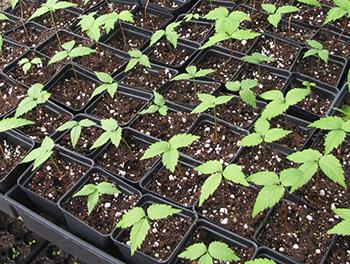 The most successful way of propagating black cohosh is through its rhizomes. Cut them about 4-inches long, ensuring that each section has a bud and fibrous roots.
The most successful way of propagating black cohosh is through its rhizomes. Cut them about 4-inches long, ensuring that each section has a bud and fibrous roots.
Plant the black cohosh rhizomes about 4 to 6 inches deep with the bud pointing upward. Cover them with 2-inch of soil and at least three inches of mulch. Water them well and keep the layers moist, replacing the mulch when it sinks.
Plant Care and Maintenance
Growing black cohosh from seeds can be inefficient, but it is possible. Once the plant has established itself, its patch needs little maintenance. Black cohosh needs water and plenty of organic matter to help them grow bigger roots and fuller bloom.
Black cohosh will grow best if provided with the following conditions: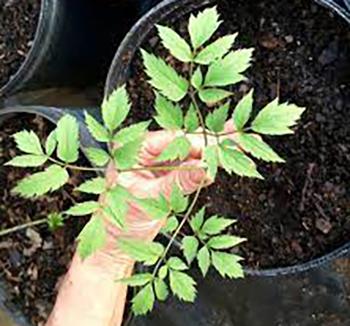
- Ample space between the plants
- The optimal temperature range is between 66 to 77⁰F (20 to 25⁰C)
- Rich, organic, and well-draining soil with pH between 5.1 to 6.0
- Generous amount of water without soaking
- Pruning in spring
- Partial shade
Black cohosh is prone to root rot when overwatered as it is susceptible to fungal pathogens. It is also prone to cutworms, blister beetles, and occasional leaf spots. It is handled using a fungicide or encouraging birds into the area to pick off the insects.
Harvesting Black Cohosh
Black cohosh roots are ready for harvest in four to five years if you start them from seeds. If you start them from rhizomes, they are well enough after three years. The best season for gathering their roots is in the fall when their weight and bioactive compounds are at their peak.
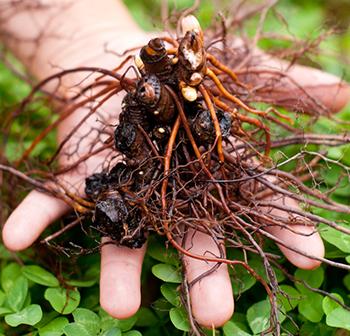 Dig the rhizomes using your hand or a spade and shake them free of soil. Protect them from the sunlight and prevent the rhizomes from drying out. Place them in a burlap sack at a temperature no more than 40⁰F while providing plenty of air circulation so the roots will not rot.
Dig the rhizomes using your hand or a spade and shake them free of soil. Protect them from the sunlight and prevent the rhizomes from drying out. Place them in a burlap sack at a temperature no more than 40⁰F while providing plenty of air circulation so the roots will not rot.
Normally, black cohosh roots are cleaned, dried, dehydrated, and stored until ready for use. You can dry the cleaned roots in an herb dryer or dehydrator at low heat and high airflow. Alternatively, you may keep them in a dry place with a temperature between 80 to 95⁰F for several weeks to air dry them.
Once they are thoroughly dried, keep them in burlap sacks in a cool, dark, and dry location. These roots will keep for less than a year.
Grow This Plant For Extra Income (It’s So Easy You Can Even Do It Indoors) (Video)
What Black Cohosh Is Good For And Natural Remedies Made From It
The effectiveness of black cohosh is often directed toward the wellness of women’s gynecological health. Although modern research lacks the scientific evidence to back the claim, it is still used presently for the same purpose. Black cohosh is still an important herb for relieving PMS, perimenopausal and postmenopausal symptoms. It alleviates scanty menses with its emmenagogue property.
Black cohosh has estrogenic benefits for curing excessive sweating and vaginal dryness. It also neutralizes the mood swings that most women experience as part of menopausal symptoms. Women may find relief from bouts of anger, stress, anxiety, and depression.
The phytochemicals present in black cohosh produce a serotonin-like effect. It regulates the body’s temperature to tame hot flashes. This is still under thorough research to prove its effectiveness, but black cohosh has been traditionally used for alleviating hot flashes in women.
Additionally, black cohosh works in toning the muscles of the uterus. It is important in easing labor pains and facilitating contractions during child delivery. Black cohosh is often used in the last stages of the pregnancy to prepare the uterus for delivery.
Additional Natural Remedies for Hormonal Health
Interested in learning more about herbal solutions for the symptoms of endometriosis, PCOS, and uterine fibroids? Visit the apothecary today and have a look at the Reishi Mushroom and Yarrow tinctures.
Aside from women’s gynecological health, black cohosh is also useful in treating:
- Palpitations
- Whooping cough and fever
- Central nervous system conditions like epilepsy
- Skin diseases
- Snakebite
- Bug bites and stings
- Spleen, liver, and lymphatic problems
- Arthritis and gout
Black cohosh has the following properties for effectively treating other related health problems:
- Anti-inflammatory
- Antispasmodic
- Alterative
- Analgesic
- Adjuvant sedative
- Aphrodisiac
- Stomachic
- Emmenagogue
- Abortifacient
- Nervine
What Parts Of The Plant Are Used For Remedies
The black cohosh roots have both economic and medicinal importance. It contains glycosides (sugar compounds), anti-inflammatory components, plant-based estrogen, and other active substances. In large-scale production, buyers often consider black cohosh with high levels of triterpene glycosides and isoflavones.
Black cohosh rhizomes are brewed and consumed as an infusion. They are often dried and made into powder
It is also available in herbal supplements and tinctures sold in specialized herbal stores. Dried black cohosh roots are sometimes available in the form of tea. When it comes to healing certain health issues like menstrual cramps, a decoction of the dried roots is the standardized preparation.
Standard Black Cohosh Tea
Ingredients:
- 1 to 2 tsp dried black cohosh roots
- 2 cups water
Steps:
- Add the black cohosh root to water and bring to a boil.

- Simmer for 10 to 15 minutes on the stovetop.

- Strain the black cohosh brew and serve while hot.

How to use this remedy:
You may drink this decoction three times a day for managing menstrual-related problems. It is also effective for digestive, respiratory, and nerve-related issues.
The recommended dose for black cohosh when using the tablet is between 40 to 128 mg per day.
When using the tincture, it should be 2 to 4 ml, diluted in water, one to three times a day. Do not consume black cohosh for more than six months. High dosage and prolonged usage may cause liver toxicity.
What Plants Resemble Black Cohosh
| Features | Black Cohosh (Actaea Racemosa) | White Baneberry (Actaea pachypoda) | Mountain Bugbane (Actaea podocarpa) |
|---|---|---|---|
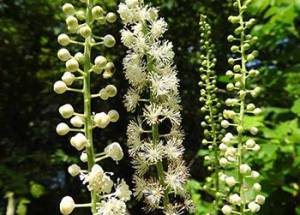 | 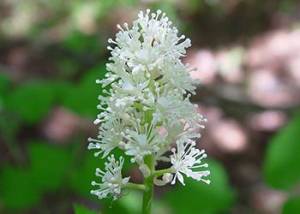 | 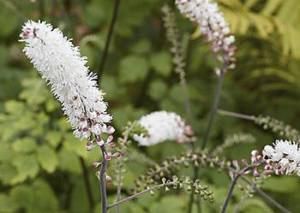 | |
| Size | 75 to 250 cm tall | 30 to 60 cm tall | 90 to 250 cm tall |
| Leaves | Green; deciduous; showy; compound; alternate; irregularly serrated | Broadly lance-shaped; compound; irregularly serrated; deep green leaflets | Green; showy; compound; alternate; serrated; fern-like |
| Flowers | White; raceme; showy; fluffy-looking; star; no petals | Delicate white; elongated flower cluster; raceme; diamond-shaped petals | Gold/green/yellow/ white; raceme; showy; no petals |
| Fruits/Seeds | Follicle-type; one carpel; black seeds | Round; white with black dot; like a collection of eyeballs with red veins | Follicle; green; short-curved beak |
| Stem | Erect; green to purple or lavender; smooth; not aromatic | Smooth; rigid; dark-brown | Green; straight; smooth; branched |
| Scent | Sweet but fetid flowers | Rose-like fragrance | Foul-smelling flowers |
Warnings And Cautions
Black cohosh is strictly prohibited for pregnant women because of its ability to induce miscarriage. It is only used traditionally at the onset of childbirth to mitigate the pain and hasten the delivery. It is also not advisable for use in breastfeeding women. Pediatric use of black cohosh is likewise not recommended.
Long-term use of black cohosh increases the susceptibility to diseases pertaining to the breast and uterus. It can also cause liver toxicity when taken in a high amount. Do not use any black cohosh supplement for more than six months.
The safety of black cohosh is not yet established. So, do not mix this herb with other medications, herbal or prescriptions. Before taking any herbal medication like black cohosh, check with your doctor for possible interaction and its safety and effectiveness.
You may also like:
 7 Natural Remedies for Menopause
7 Natural Remedies for Menopause
Discover The Mysterious Mix Of Herbs That Melts 6Lbs Per Week & Stops Cravings! (Learn More)
50 Health Tips Every Person Over 50 Should Know








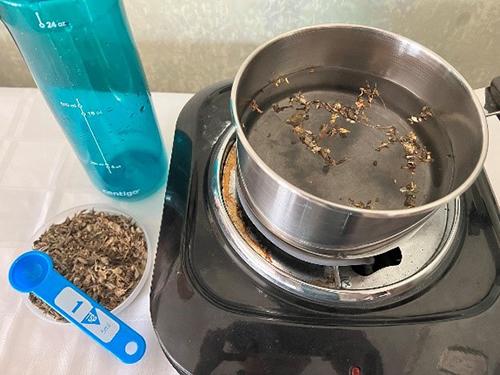
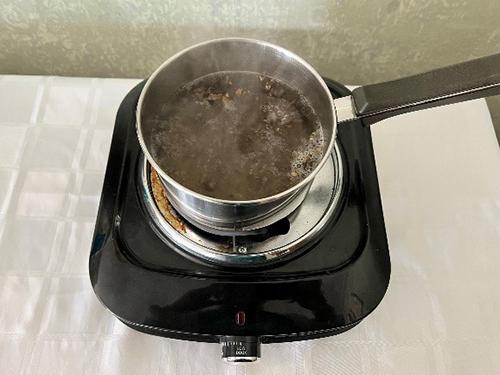
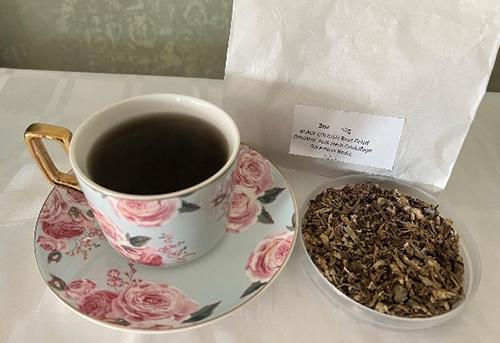

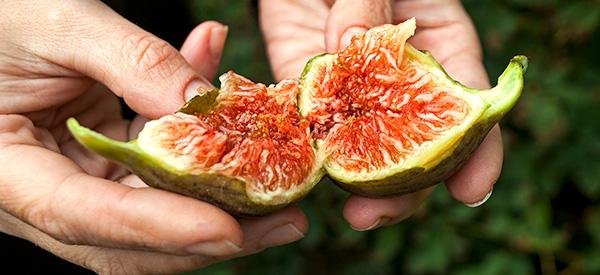

I have taken black cohosh in a pill form (80mg) twice a day for years to control my hot flashes. This article says not to take for more than 6 months. Now I’m scared. What can I take in the mean time if I take a break from black cohosh? How long of a break from it do I need?
Hi Elaina-I used a product called Body Balance which helped a lot. All it is is Aloe and seaweed which is high in minerals. Generally our diets fall short in that area so you might want to look at that. Hope that helps.
I can’t answer you about black cohosh, but I used to have the night sweats, and learned that a capful of raw apple cider vinegar with mother in a large glass of water taken 1-2 times a day totally eliminated the sweats…
You sent my book in a paper envelope and the mail man left it at the base of my mailbox in the rain can I get a replacement please ? I would thing a plastic envelope would not be that much more expensive after all that work to print a nice book
Hi Brian,
Thank you for your interest in our work.
I am deeply sorry to hear the book you received was damaged in the rain.
I’ll send you a new copy via priority mail right away. I’ll get back to you with the tracking number, once available.
Many blessings and good health!
I used 2 caps before bedtime every night for 10 years to replace Premarin after a hysterectomy at 24. I did not have any ill effects. Still no cancer at 63. It helped me keep calm with a raging, angry husband around and I was able to sleep well.
Thanks for sharing your success story!
How is black cohosh a remedy for epilepsy but not good to use long term? Is this implying that black cohosh can cure epilepsy? I’m trying to find a natural therapy for my epilepsy, that’s why I ask.
I would be very interested in finding out about using this for epilepsy too!!!
My grandmother gave us what she called “black snake root” for diarrhea and stomach cramps. We chewed the roots and they tasted kind of like licorice. I this that plant? I grew under an100yr old oak tree in the front yard.